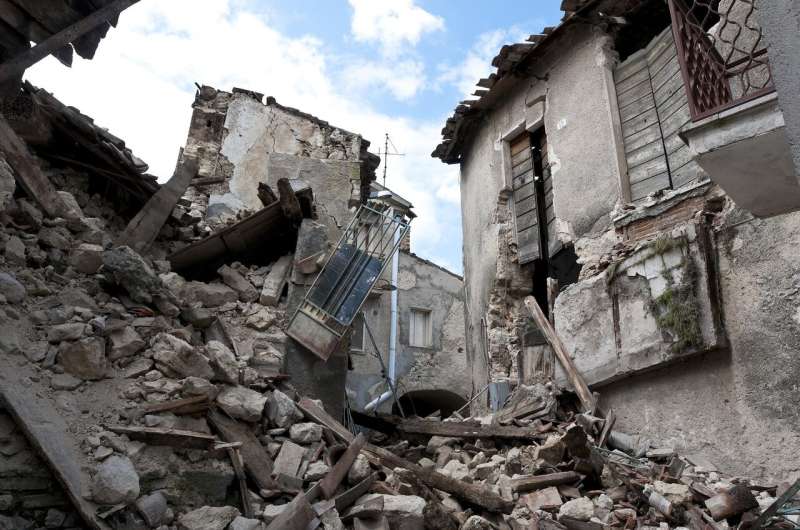Q&A: Behind the scenes with an earthquake scientist

Sylvain Barbot is trying to do what can't be done yet: reliably predict earthquakes. The assistant professor at the USC Dornsife College of Letters, Arts and Sciences knows that it's impossible—at least not yet. But he chips away at answers. He studies the physics of rocks in motion to understand how faults load strain, distribute it underground, release it in a big shake and then reboot to do it over again.
Barbot recently published a pair of research papers in leading journals—Science and Nature—about seismic hazards in California. He shares his expert perspective here on the topic.
Why can't we predict earthquakes?
These are dynamic systems, happening miles underground and occurring in slow geological time. So predicting when an earthquake would happen on any fault is not currently possible, and it's going to be a long time before we can do it. Today, we can identify regions where we expect future earthquakes to fill a seismic deficit, so the best course of action for the public is to prepare for earthquakes to minimize damage.
What is the quake risk for Southern California?
The region is at risk for a major earthquake on the San Andreas Fault, where the last large earthquake was in 1857. Since really big earthquakes occur every 160 years or so, there's been more than enough time since then for another big one to occur today. Many other faults that traverse Los Angeles can snap virtually at any moment, which is what happened during the Northridge earthquake. Studying how the faults load and release energy helps us understand how and where earthquakes occur.
How does one become an earthquake specialist?
I've tried many occupations before I became an earthquake scientist. I was a dance instructor and worked in IT. I like this because it combines physics, mathematics and computational science rooted in geology and geophysics. To figure out earthquakes, we need to understand their geological setting, as well as plate tectonics and the Earth's history—it's all interconnected. No one understands it all. There is so much to do until we can predict earthquakes so we collaborate and learn from each other, which I find rewarding.
How do you study earthquakes in the lab?
I'm trying to understand how rocks break under stress depending on physical conditions—a key challenge to predicting earthquakes. If we could understand this, we could use computer simulations to predict how the mechanical system evolves before a seismic rupture. I'm also trying to show how California faults load stress in between earthquakes. And I'm developing new methods to simulate earthquakes, as we're unable to do this accurately across a large region like Southern California. We need to make progress on so many aspects of the problem.
More information: Lifeng Wang et al. Excitation of San Andreas tremors by thermal instabilities below the seismogenic zone, Science Advances (2020). DOI: 10.1126/sciadv.abb2057
Sylvain Barbot. Mantle flow distribution beneath the California margin, Nature Communications (2020). DOI: 10.1038/s41467-020-18260-8
Journal information: Science , Nature , Science Advances , Nature Communications
Provided by University of Southern California




















